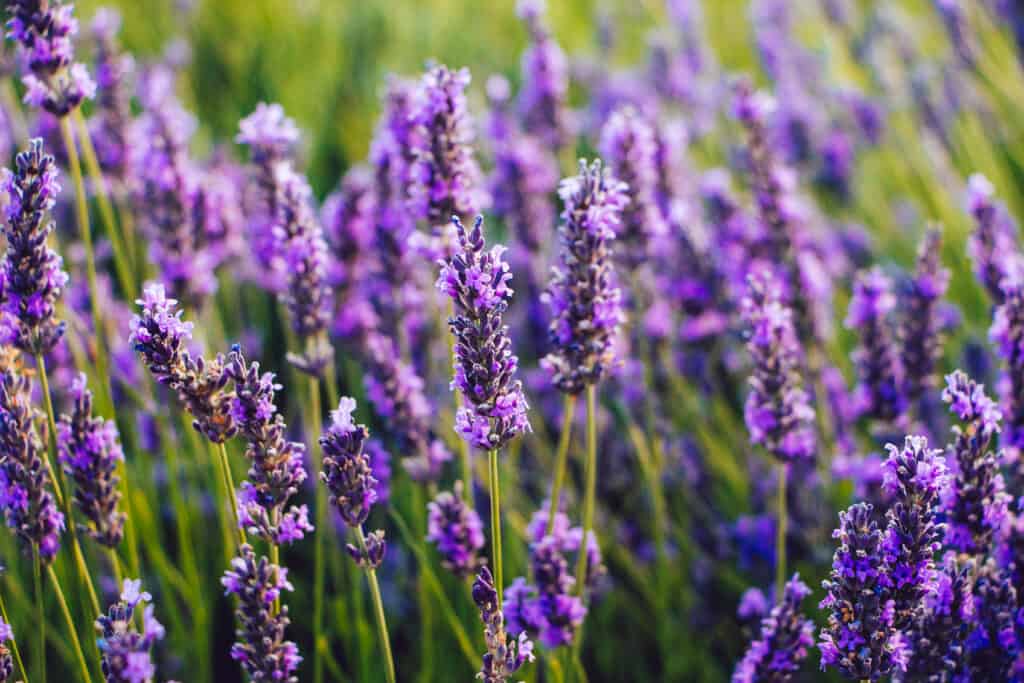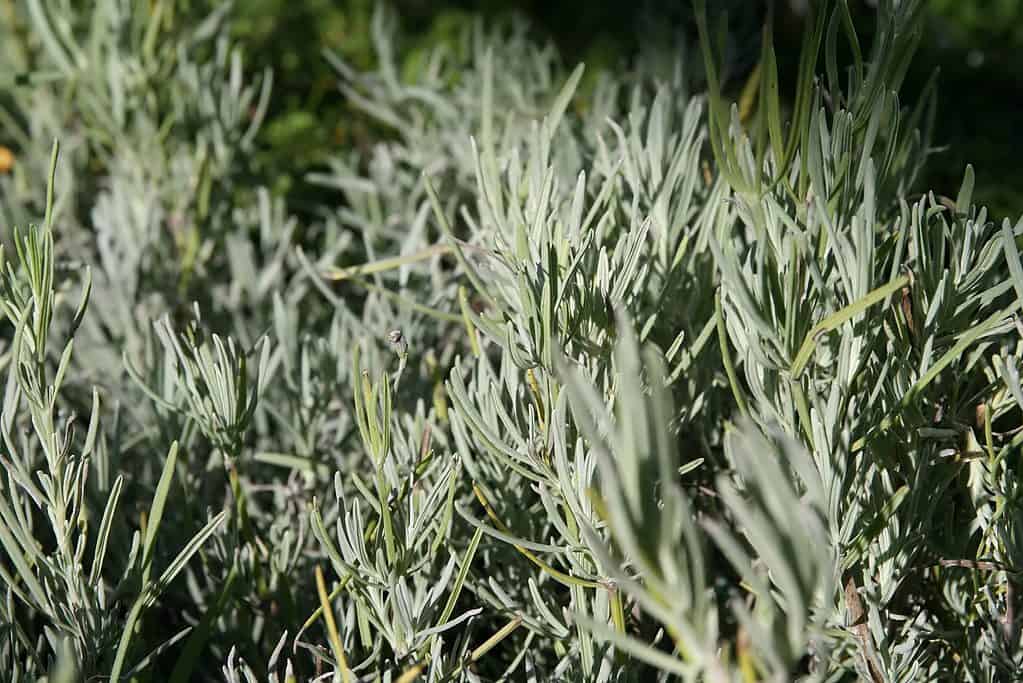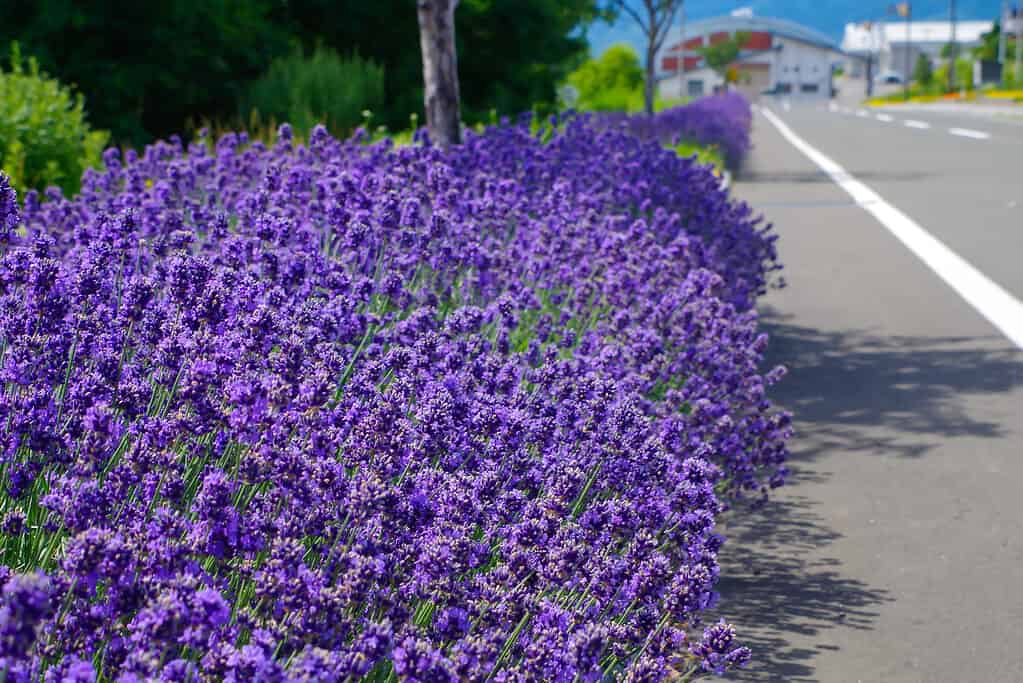If you’ve purchased essential oils or skincare products, you might have seen the term “lavendin” instead of “lavender.” These products boast similar scents and label imagery, but it leads to an important question: what is lavendin?
Contrary to popular belief, lavendin isn’t a fake type of lavender made up for the cosmetic industry. It’s a special type of lavender hybrid.
Let’s explore the differences between lavender and lavendin, and how you can grow each plant.
Comparing Lavender vs. Lavendin:
Lavender vs. Lavendin: Key Differences
The differences between true lavender and lavendin are subtle. True lavender (English lavender) is a naturally occurring species. Lavendin is naturally occurring, but it’s a hybrid of two different lavender species.
There are also subtle differences in growth and coloration. Lavender tends to have soft purple blooms and vibrant stems where lavendin has rich blue-purple blooms and silvery green stems.
Lavender has a sweet, floral aroma. Lavendin has an undertone of camphor, which is quite strong in some cultivars. Lavendin also produces a higher yield when used for essential oils and derivatives, which means a higher production value with lower costs.

©iStock.com/ASIFE
Lavender vs. Lavendin: Classification
There are several species of lavender in the Lavandula family. English lavender is often referred to as true lavender, as it is considered the original species. True lavender is classified as Lavandula angustifolia, which translates to “narrow leaf lavender.”
Lavendin is classified as Lavandula x intermedia, as it’s a hybrid between Lavandula angustifolia and Lavandula latifolia (spike lavender). The name roughly translates to “lavender across multiple channels,” indicating its two unique species. There are several Lavandula x intermedia, the most popular of which is Lavandula x intermedia ‘Grosso’ for its high level of naturally-occurring camphor. Lavendin is also called Lavandula hybrida or “lavender hybrid” and “lavandin” which appears to be a regional spelling.

©iStock.com/alxpin
Lavender vs. Lavendin: Origin
Despite its name, English lavender is not from England. It’s from the Mediterranean region of Europe, thriving on the warm temperatures, consistent humidity levels, and frequent sunlight.
Lavendin was discovered in France during the 1970s by lavender farmer Pierre Grosso. At the time, France was struggling with a mycoplasma infection that still impacts France’s lavender production today. It’s said that Grosso’s fields, like many farmers, were largely wiped out. He discovered a few living plants which weren’t immediately recognizable and took cuttings back for study. This was the first recorded case of Lavandula x intermedia ‘Grosso’. Within a few years, many French lavender farmers switched to this hybrid.

©Photo by David J. Stang, CC BY-SA 4.0 <https://ift.tt/NfvQbqm>, via Wikimedia Commons – License
Lavender vs. Lavendin: Description
Lavender and lavendin are very similar with a few subtle differences. English lavender has blue-green stems ending in flower spikes with soft purple blooms in a stacked, cylindrical growth pattern. Lavender typically grows two to three feet tall, with stalks measuring 12-16 inches long, though they can grow larger if left unharvested in ideal conditions. True lavender emits a sweet, floral aroma.
Lavendin has silver green stems ending in flower spikes with blue-purple blooms. The blooms are tapered toward the top in a proper spike formation, similar to the Lavandula latifolia. Lavendin grows up to two feet tall and three feet wide when mature. Emits a sweet, herbaceous aroma with notes of camphor — which is stronger in some cultivars than others.

©ajisai13/Shutterstock.com
Lavender vs. Lavendin: Uses
Lavender is often used in aromatherapy to reduce stress and induce a sense of calm. It’s also a popular ornamental flower both in gardens and dried for indoor decor. Lavender can also be used in baked goods, such as cakes and cookies, as well as cocktails. It pairs well with vanilla and lemon flavors. Each year, more studies are conducted about the potential efficacy of lavender in treating various ailments — the results are promising but more research is needed.
Lavendin’s primary use is essential oil production thanks to its hardy nature and high yield. As it grows in a wider range of zones than lavender, it’s also easier to harvest.

©iStock.com/Olivka888
Lavender vs. Lavendin: Growth Tips
Lavender is notoriously difficult to grow from seed, as the new plants rarely show characteristics of the parent plant. Propagating and rooting a cutting from an established plant is recommended. Grow transplants in full sunlight in well-draining soil in USDA Zones 5-8. Water regularly until the plant is established, ensuring proper drainage to prevent root rot.
Lavendin is a sterile hybrid and can’t be grown from seed. Take a cutting from an established plant or purchase a transplant for your garden. Grow the transplant in full sunlight in well-draining soil in USDA Zones 5-9. This hardy hybrid is drought and pollution tolerant, making it ideal for hot climates and urban gardens. Water frequently until established, ensuring proper drainage to prevent root rot.
Up Next
- French Lavender vs English Lavender: Is There a Difference?
- Goodwin Creek Lavender vs. English Lavender
- Is Lavender Perennial Or Annual?
The post Lavender vs. Lavendin: What’s the Difference? appeared first on AZ Animals.
from Animal News, Facts, Rankings, and More! - AZ Animals https://ift.tt/Ikc7Yae